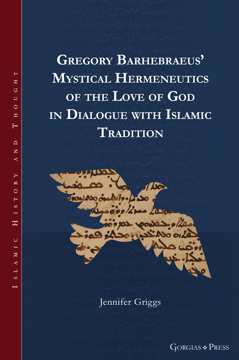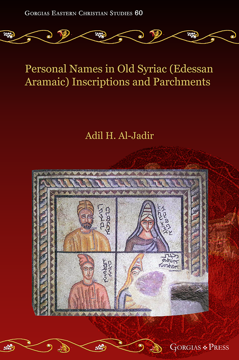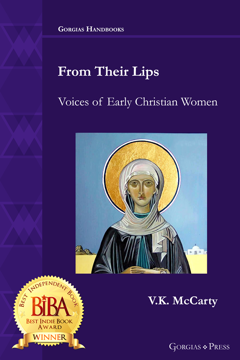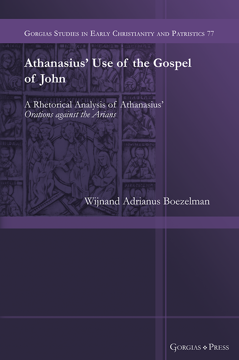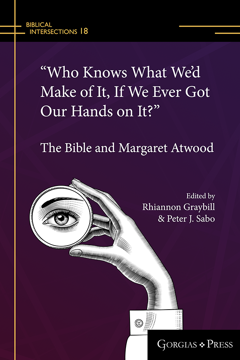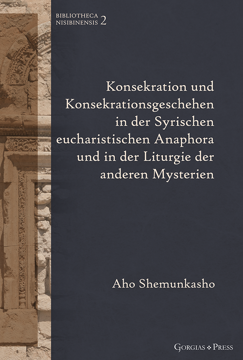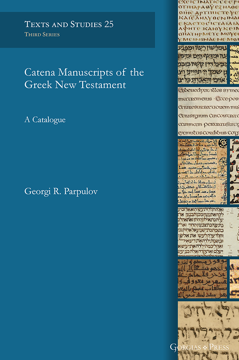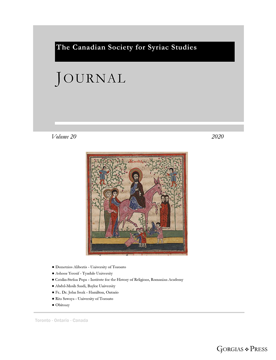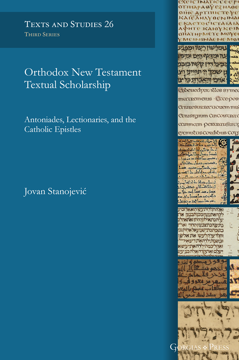Bar Sira According to the Syriac Peshitta Version with English Translation
Text Prepared by George Anton Kiraz & Joseph Bali; English Translation by David Skelton, Jacob A. Lollar & Blake Jurgens
Series: Surath Kthob 20
ISBN: 978-1-4632-4245-9
This volume is part of a series of English translations of the Syriac Peshitta along with the Syriac text carried out by an international team of scholars.
$150.00 (USD) $90.00 (USD)
Gregory Barhebraeus' Mystical Hermeneutics of the Love of God in Dialogue with Islamic Tradition
Series: Islamic History and Thought 23
ISBN: 978-1-4632-4247-3
An inquiry into the mystical thought of Gregory Barhebraeus, offering a reading of Barhebraeus’ mystical texts by bringing them into conversation with critical religious studies and the hermeneutical tradition of philosophy.
$133.00 (USD) $79.80 (USD)
Personal Names in Old Syriac (Edessan Aramaic) Inscriptions and Parchments
Series: Gorgias Eastern Christian Studies 60
ISBN: 978-1-4632-4249-7
This book collects systematically all the personal names found in Old Syriac sources in such a way as to enable them to be dealt with from a structural and lexical point of view and compared with other corpora of Aramaic personal names as well as Hebrew and Arabic names. As far as possible, the personal names of the new finds of unpublished inscriptions discovered recently are included. Thus, this study covers all the personal names which are found in the Syriac corpus so far. The book fills a significant gap in scholarship, since there are dedicated works on Palmyrene, Hatran and Nabataean personal names, but no such work exists for early Syriac (i.e. pre-Christian Syriac) personal names.
$114.95 (USD) $68.97 (USD)
From Their Lips
Voices of Early Christian Women
By VK McCarty
Series: Gorgias Handbooks 53
ISBN: 978-1-4632-4255-8
The Church venerates among its saints several Early Christian women whose teaching and wisdom contribute to the depth of our theological heritage. Their inspired voices can be heard at work witnessing: in the New Testament, in the early centuries of the Church Fathers and throughout the Byzantine era. Readers will find this volume bringing female leaders from the Early Church to life from the traditional ancient sources and sharing their experience of the presence of God. Their remembered advice to followers still illuminates issues of faith and justice which bind us together as Christians today.
$48.00 (USD) $28.80 (USD)
Athanasius' Use of the Gospel of John
A Rhetorical Analysis of Athanasius' Orations against the Arians
ISBN: 978-1-4632-4257-2
The Orations against the Arians are an important landmark in the development of Christological and Trinitarian doctrine. The Orations contain extensive references to the Christian Scriptures and are steeped in rhetoric. The use of Scripture and polemical rhetoric against Athanasius’ theological opponents, the Arians, is intricately interwoven. This monograph offers a rhetorical analysis of the Orations against the Arians to demonstrate the interplay of scriptural reasoning and polemic in Athanasius’ work. In this way, Boezelman’s study provides a fresh perspective on the reception of John’s Gospel in the fourth century.
$144.95 (USD) $86.97 (USD)
“Who Knows What We’d Make of It, If We Ever Got Our Hands on It?” (paperback)
The Bible and Margaret Atwood
Edited by Rhiannon Graybill & Peter J. Sabo
Series: Biblical Intersections 18
ISBN: 978-1-4632-4258-9
In the nightstands of hotel rooms, kept under lock and key, in the poetry of a pre-apocalyptic environmental cult, and quoted by children, atheists, and murderers alike—the Bible is omnipresent in the work of Margaret Atwood. The Bible is found not only in her novels but also in her poetry, short stories, and non-fiction work. “Who Knows What We’d Make of It, If We Ever Got Our Hands on It?” assembles cutting edge literary and critical readings of Margaret Atwood and the Bible.
$65.00 (USD) $39.00 (USD)
Konsekration und Konsekrationsgeschehen in der Syrischen eucharistischen Anaphora und in der Liturgi
Series: Bibliotheca Nisibinensis 2
ISBN: 978-1-4632-4259-6
Am Beispiel der Initiationssakramente (Taufe, Firmung, Eucharistiefeier) und der Priesterweihe wird einerseits die Konsekration der Materie (Wasser, Myronöl, Brot und Wein) und des Empfängers dargestellt, anderseits das Konsekrationsgeschehen der einzelnen liturgischen Vollzüge nach der syrisch antiochenischen Liturgie miteinander verglichen, analysiert und kommentiert.
$123.00 (USD) $73.80 (USD)
Catena Manuscripts of the Greek New Testament
A Catalogue
Series: Texts and Studies (Third Series) 25
ISBN: 978-1-4632-4260-2
The book is a synoptic catalogue of a large class of Greek manuscripts: it describes all pre-seventeenth century copies of the Greek New Testament in which the biblical text is accompanied by commentary. Manuscripts where this commentary consists of combined excerpts (catena) from the works of various authors are described in particular detail. Those that have similar content are grouped together, so that the potential relatives of any given manuscript can be easily identified. Several previously unknown types of catenae are distinguished and a number of previously unstudied codices are brought to light for the first time. To ensure its longer shelf-life, the volume systematically references on-line electronic databases (which are regularly updated). It will be of use to anyone interested in Byzantine book culture and in biblical exegesis.
$114.95 (USD) $68.97 (USD)
Journal of the Canadian Society for Syriac Studies 20
Edited by Amir Harrak
ISBN: 978-1-4632-4262-6
A refereed journal published annually by the Canadian Society for Syriac Studies.
$75.00 (USD) $45.00 (USD)
Orthodox New Testament Textual Scholarship
Antoniades, Lectionaries, and the Catholic Epistles
Series: Texts and Studies (Third Series) 26
ISBN: 978-1-4632-4267-1
The present study represents the first attempt to expand the methodological and practical framework of textual scholarship on the Greek New Testament from an Orthodox perspective. Its focus is on the Antoniades edition of 1904, commonly known as the Patriarchal Edition. The examination of the creation and reception of this edition shows that its textual principles are often misrepresented. In particular, it is shown to be more closely related to the Textus Receptus than to lectionary manuscripts. This is confirmed by an analysis of lectionary manuscripts using the Text und Textwert methodology and a detailed comparison of the Antoniades edition with the recent Editio Critica Maior of the Catholic Epistles. A textual commentary is provided on key verses in order to formulate guidelines for preparing an edition of the Greek New Testament that would satisfy the needs of Orthodox users in different contexts. This study offers a foundation for the further development of New Testament textual scholarship from an Orthodox perspective, informed both by modern critical scholarship and Orthodox tradition. It also provides a fresh translation of Antoniades’ introduction in an Appendix.
$114.95 (USD) $68.97 (USD)

